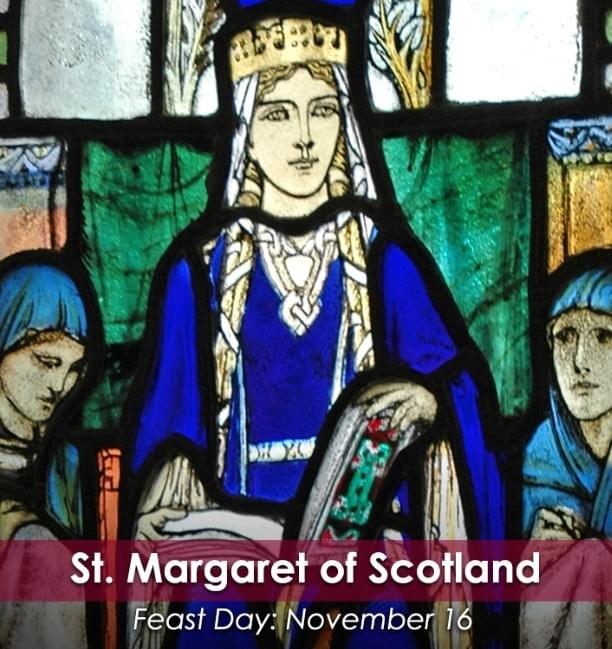

St Aloysius & The Sacred Heart Parish
St Aloysius & The Sacred Heart Parish
Thirty Third Sunday in Ordinary Time
November 16th Saint Margaret of Scotland
Sometimes called the "Pearl of Scotland," St. Margaret was born to an exiled prince and later lived at the court of St. Edward the Confessor. After the Norman Conquest, Margaret and her family fled England and settled in Scotland where she married King Malcolm III. As queen, she was consulted in state matters, promoted the arts and education, and helped reform the Church in Scotland. Her reforms helped the stability of the Church in Scotland. Known throughout her kingdom for her piety and charitable nature, Margaret died in 1093. She is a model for holding positions of power and still living a charitable life. She was canonized by Pope Innocent IV in 1250. (video)
November 17th Saint Elizabeth of Hungary
St. Elizabeth of Hungary was a princess in the Kingdom of Hungary in the thirteenth century. She used her wealth to start a hospital where she spent her life caring for the sick until she died at the early age of 24. She is a patroness of hospitals and nurses because of the great charity work she did with her hospital. She also was an early member of the Third Order of St. Francis and today is remembered as one of their patronesses. Elizabeth was canonized only 4 years after her death for her great holiness, and thus there are many churches dedicated to her throughout Europe, as well as many works of art and local traditions. (video)
November 18th The Dedication of the Basilicas of Saints Peter and Paul
The Dedication of the Basilicas of Saints Peter and Paul commemorates the building of two basilicas: St. Peter’s Basilica and the Basilica of Saint Paul Outside the Walls. Both were built in Rome during the reign of Emperor Constantine (4th century). These two basilicas serve a great importance for the universal Church since they were built on the burial sites of Sts. Peter and Paul. They serve as pilgrimage sites, allowing Catholics to travel to the heart of Christianity on earth: "ad limina apostolorum" or "[Go] to the tombs of the Apostles." (video)
November 21st The Presentation of the Blessed Virgin Mary
When Mary turned three years old, her parents, Sts. Joachim and Anne, offered their daughter to God in the Temple. The Presentation of the Blessed Virgin Mary recognizes that Mary was holy, even in her childhood. The feast also recognizes that God chose Mary to be the mother of Jesus. In response, Mary placed herself at the service of God. The feast was celebrated beginning in the ninth century, and was introduced into the official Catholic calendar in 1585. It is the final feast in the Marian Cycle, also containing the Nativity of Mary and the Holy Name of Mary, corresponding to the cycle of feasts of Jesus: Christmas, Holy Name of Jesus, and the Presentation of Jesus. (video)
November 22nd Saint Cecilia
Much of what we know about St. Cecilia comes from Church tradition. According to these legends, St. Cecilia was born to a noble Christian family. When forced to marry a Roman man named Valerian, she pleaded to preserve her virginity and inspired him to convert to Christianity. Both were martyred in the early third century. Legend holds that during their wedding, Cecilia sang to God in her heart, thus leading to her being the patron saint of musicians. St. Cecilia’s life serves as a reminder of the central role music plays in the liturgy. (video)

staloysius@
Telephone
01236 763190
Copyright © 2019 - Proudly built with Strikingly
